The new Omicron variant “BA.2″—also known as “stealth Omicron”—has already become the dominant COVID-19 strain in the UK, and is tearing through the rest of Europe. “The increasing presence of the BA.2 sub-lineage of Omicron and the recent slight increase in infections in those over 55 show that the pandemic is not over and that we can expect to see Covid circulating at high levels,” says Dr. Jenny Harries, UK Health Security Agency (UKHSA) chief executive. Here are symptoms of BA.2, according to doctors. Read on—and to ensure your health and the health of others, don’t miss these Sure Signs You’ve Already Had COVID.
1
It’s Highly Transmissible
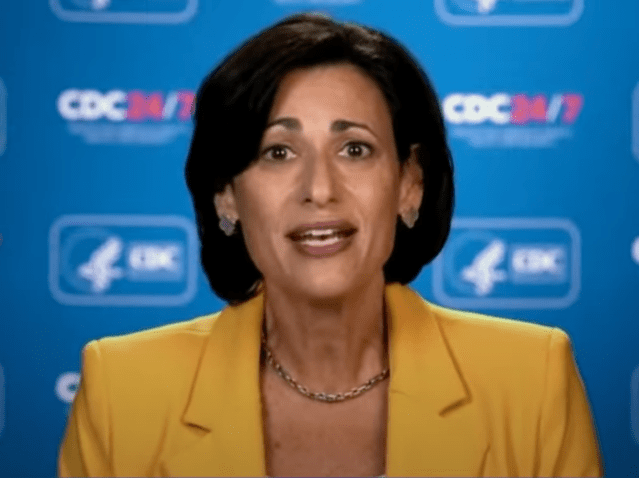
Shutterstock
Both Dr. Anthony Fauci and CDC director Rochelle Walensky have confirmed the BA.2 variant of COVID-19 is highly transmissible and could become the new dominant virus. “We do see that it is a bit more transmissible—some have predicted 30%, others have predicted 80% more transmissible,” Dr. Walensky said at the Bipartisan Policy Center’s Transitioning out of the COVID-19 Emergency Phase panel on March 17. “We’ve known about BA.2 in this country since mid December, but didn’t have a lot of it. And just this past week, we demonstrated that about 23% of our sequences are Omicron. So it is increasing, but it’s an increasing percentage of a much less absolute number of cases. So we aren’t seeing this massive takeoff of BA.2, but we do anticipate that we will see more of it and it may become the predominant variant in the weeks ahead.”
RELATED: How Long Do COVID Symptoms Last?
2
Dizziness and Fatigue
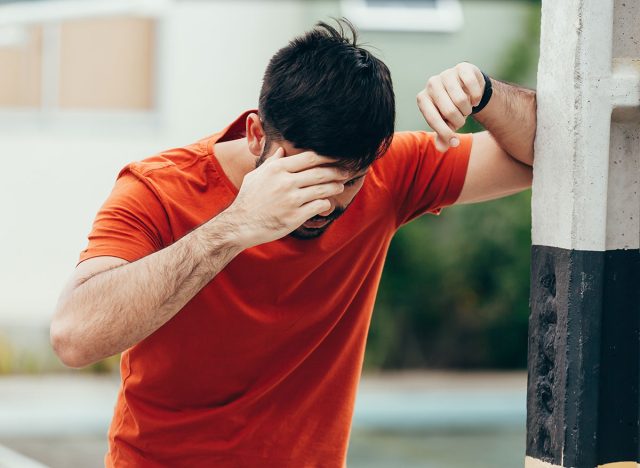

Shutterstock
Dizziness and fatigue are common symptoms of BA.2, according to health company ZOE, which runs a COVID-19 symptom tracking app. “One in 20 new cases had this variant last week, and as it’s doubling every few days this should predominate within a month,” says lead scientist Professor Tim Spector. “The ZOE data has also seen more confirmed reinfections in recent weeks with around 7% of new symptomatic cases having previously tested positive, suggesting a natural infection with Delta may not offer much protection.”
RELATED: Here’s When the Next COVID Wave May Come, Experts Say
3
Runny Nose
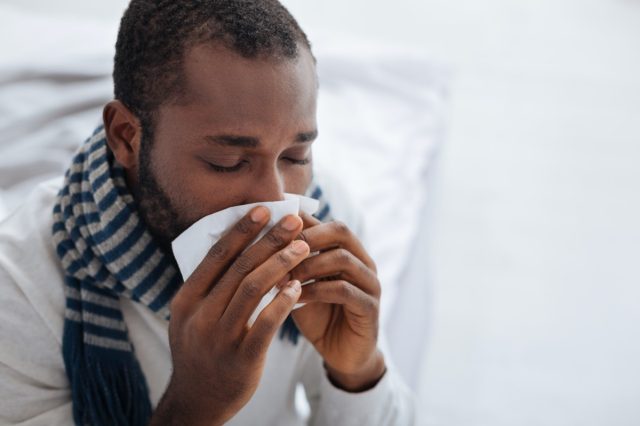

Shutterstock
Just as with Omicron, symptoms of BA. 2 include a runny nose—so if you’re not sure what’s causing it, err on the side of caution. “At this point, it’s probably best to assume you are positive until you are proven otherwise,” says Marc Mazade, M.D., director of Infection Control at Cook Children’s Medical Center in Fort Worth. “If family members are having symptoms, they should get tested as soon as possible, which may take longer than usual.”
RELATED: What Taking Zinc Does For Your Body, Say Experts
4
Headache


Shutterstock
Headache is another common symptom of BA.2. “A runny nose and headache are symptoms of many infections, but may also be the first symptoms – and only symptoms – of Covid,” says Professor Irene Petersen, professor of epidemiology and health informatics at University College London. “Therefore, if you have these symptoms, I’d encourage you to use lateral flow tests for a couple of days.”
RELATED: If You Do This Every Morning, Get Checked For Diabetes
5
You Might Also Have These Symptoms
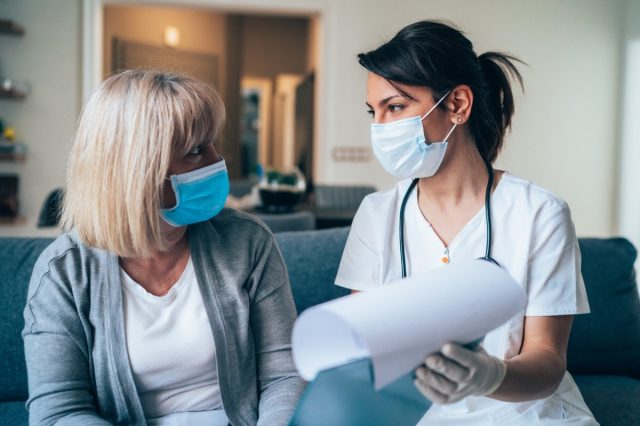

iStock
“The good news is that most vaccinated infections are mild, with symptoms lasting on average for a shorter time overall than Delta and with less severe cases,” Spector says. “It’s clear that COVID and its new variants will continue to have an impact on our day-to-day lives for some time. It’s crucial that we’re responsible with our new freedoms and help to keep case numbers down and prevent the virus reaching the more vulnerable groups.” Other symptoms may appear 2-14 days after exposure to the virus. People with these symptoms may have COVID-19:
Fever or chills
Cough
Shortness of breath or difficulty breathing
Fatigue
Muscle or body aches
Headache
New loss of taste or smell
Sore throat
Congestion or runny nose
Nausea or vomiting
Diarrhea
RELATED: I’m a Doctor and This is the #1 Sign You Have High Blood Sugar
6
How to Stay Safe Out There
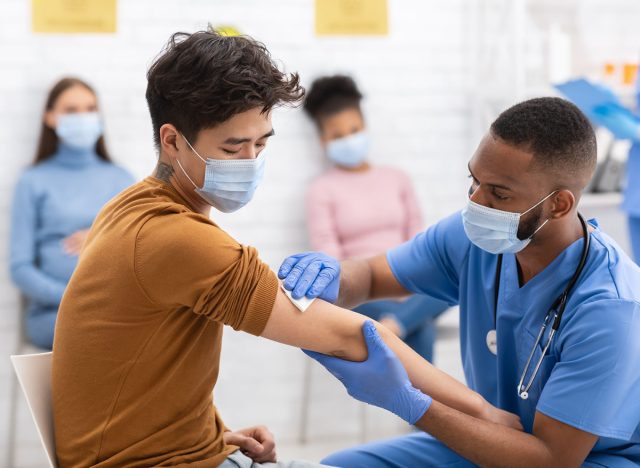

Shutterstock
Follow the public health fundamentals and help end this pandemic, no matter where you live—get vaccinated or boosted ASAP; if you live in an area with low vaccination rates, wear an N95 face mask, don’t travel, social distance, avoid large crowds, don’t go indoors with people you’re not sheltering with (especially in bars), practice good hand hygiene, and to protect your life and the lives of others, don’t visit any of these 35 Places You’re Most Likely to Catch COVID.

